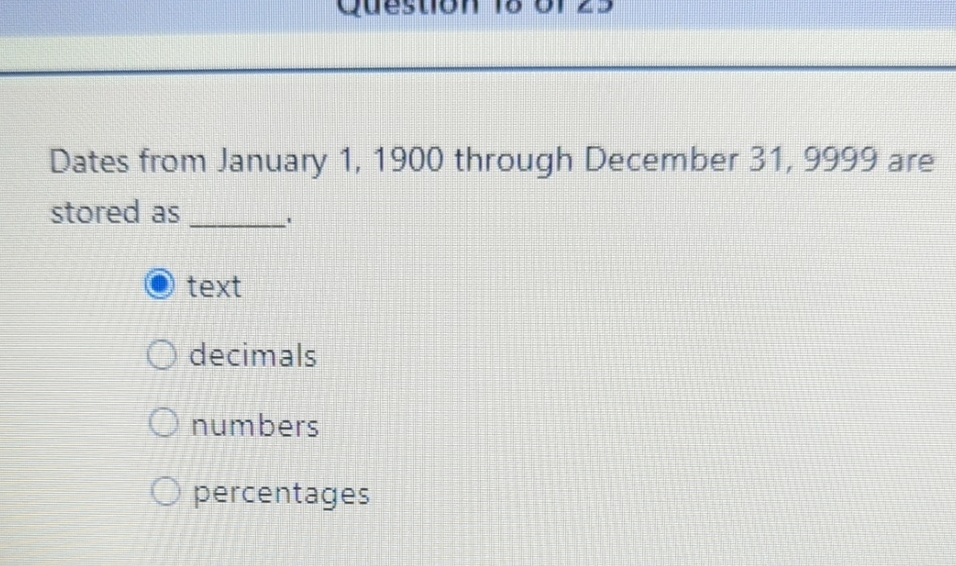Homework Help: Questions and Answers: How are dates from January 1 1900 through December 31 9999 stored??

A. Text
B. Decimals
C. Numbers
D. Percentages
Answer
To determine how dates are stored in systems from January 1, 1900, through December 31, 9999, let’s analyze given options:
Given Options: Step by Step Answering
a) Text
- Text refers to storing data in string format, where the date would be saved as a series of characters like “January 1, 1900” or “01/01/1900”. While dates can be stored as text, this is generally not how dates are stored in systems for calculations and manipulation.
- Storing dates as text would make it difficult to perform operations like adding days or calculating differences between dates, which is why this is not the most efficient approach.
b) Decimals
- Decimals represent numbers with fractional parts. Dates generally do not need fractional representation, and decimals aren’t typically used for date storage. Therefore, this is not a suitable format for storing dates.
c) Numbers
- Numbers are the typical way dates are stored in most systems. In software, dates are often represented as numbers (such as the number of days or seconds since a reference point). For example:
- In Excel, dates are stored as serial numbers where January 1, 1900, is represented as 1, January 2, 1900, as 2, and so on. This makes it easy to perform calculations with dates.
- In Unix-based systems, dates are often represented as the number of seconds since January 1, 1970 (the Unix epoch).
- Storing dates as numbers allows for easy date manipulation, such as adding or subtracting days.
d) Percentages
- Percentages are used to represent ratios or proportions and are not a suitable format for storing dates. Storing dates as percentages would make no practical sense.
Final Answer
Based on the above analysis, the correct answer is:
c) Numbers
Dates from January 1, 1900, through December 31, 9999, are most commonly stored as numbers in various systems because this allows for efficient calculations and operations on dates.
Learn More: Homework Help
Q. Which of the following Big O notations is appropriate for the complexity of a search algorithm?
Q. Which of the following Big O notations is appropriate for the complexity of a sort algorithm?
Q. Arrange the following developments in computer technology in the correct chronological order.